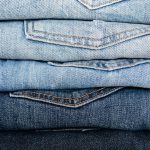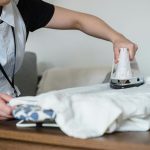Are you familiar with the terms woven and non-woven fabrics? Do you know the differences between these two types of fabrics and how they can affect the quality and durability of your clothes and household items?
Understanding the distinctions between woven and non-woven fabrics can help you make informed decisions when buying new fabrics or when choosing to use them for different purposes.
Woven fabrics are made by interlacing two or more threads or yarns at right angles to form a flat, stable surface. They are known for their strength and durability, and are commonly used in clothing, upholstery, and home décor.
On the other hand, non-woven fabrics are created by bonding or fusing fibers together without weaving or knitting them. These fabrics are often used in disposable products, such as napkins and wipes, but also show up in more durable products like roofing materials and geotextiles.
By understanding the characteristics of these two fabrics, you can make the right choices for your needs.
Table of Contents
Definition and Characteristics of Woven Fabrics
So, you’re curious about woven fabrics? Well, let me tell you, they’re made up of interlacing yarns that create a strong and durable material.
The process of weaving involves passing a weft yarn over and under a warp yarn, creating a tight, structured pattern. This method produces a fabric that is more stable and less likely to fray or stretch out of shape.
Woven fabrics are versatile and can be made from a variety of fibers, including cotton, wool, silk, and synthetic materials. The tight weave makes them ideal for heavy-duty applications, such as upholstery, drapery, and outdoor gear. However, they can also be lightweight and breathable, making them perfect for clothing and accessories.
One of the benefits of woven fabrics is their ability to hold colors and patterns well. The tight weave allows for intricate designs to be displayed without distortion or bleeding. Plus, woven fabrics can be easily customized to different needs, such as water-resistant coatings or fire-retardant treatments.
Overall, woven fabrics are a reliable and durable choice for any project.
Definition and Characteristics of Non-Woven Fabrics
So, you wanna know about non-woven fabrics? Well, let’s start with the bonding process. This is the method used to create non-woven fabrics by bonding fibers together without the use of weaving or knitting.
There are various types of non-woven fabrics, including spunbond, meltblown, and needle-punched. Each has its own unique properties.
Non-woven fabrics are used in a wide range of applications, from medical products to home furnishings and beyond.
Bonding Process
The bonding process is what brings woven and non-woven fabrics together, creating unique properties that make them useful in different ways.
In non-woven fabrics, the bonding process involves using heat, pressure, or chemicals to fuse fibers together, creating a strong and durable material. The bonding process used depends on the type of non-woven fabric being produced and the intended use of the fabric.
There are two main types of bonding processes used in non-woven fabrics: mechanical bonding and chemical bonding. Mechanical bonding involves using needles or other mechanical means to interlock fibers together, while chemical bonding involves using adhesives or chemicals to bond fibers together.
Each bonding process creates a different type of non-woven fabric, with unique properties and uses.
Types of Non-Woven Fabrics
Now let’s explore the various types of non-woven fabrics available in the market. Non-woven fabrics are made by bonding fibers together using heat, chemicals, or pressure. The different types of non-woven fabrics are classified based on the bonding method used and the type of fibers used.
One of the most common types of non-woven fabrics is the spunbond non-woven fabric. This fabric is made by extruding melted polymer through small nozzles to form fibers, which are then bonded together using heat or chemicals. Spunbond non-woven fabrics are strong, durable, and have good breathability, making them ideal for use in applications such as medical gowns and masks, as well as in agriculture and construction. Another type of non-woven fabric is the needle-punched non-woven fabric, which is made by punching fibers together using long needles. This process creates a fabric that is soft and flexible, yet strong and durable. Needle-punched non-woven fabrics are commonly used in the automotive industry for interior linings and upholstery, as well as in geotextiles for erosion control and soil stabilization.
| Type of Non-Woven Fabric | Bonding Method | Fibers Used |
|---|---|---|
| Spunbond | Heat/Chemical | Polypropylene, polyester |
| Needle-punched | Needles | Polyester, polypropylene, acrylic |
| Meltblown | Meltblown | Polypropylene, polyester |
In addition to these two types, there are also meltblown non-woven fabrics, which are made by melting and extruding polymer through small nozzles onto a conveyor belt, where it is cooled and solidified. The result is a fabric with very fine fibers that can filter out small particles, making it ideal for use in air and water filtration systems. Understanding the different types of non-woven fabrics available can help you choose the right material for your specific needs.
Common Applications of Non-Woven Fabrics
Let’s take a look at some of the common applications where non-woven fabrics are used.
One of the most common uses for non-woven fabrics is in the medical industry. They’re used for products like surgical gowns, face masks, and wound dressings. Non-woven fabrics are preferred in these applications because they’re disposable, sterile, and can be made to be waterproof or breathable.
Another common use for non-woven fabrics is in the construction industry. They’re used as geotextiles, which are fabrics that are placed in the ground to help stabilize soil and prevent erosion. Non-woven fabrics are also used as insulation, as they’re able to trap air and provide thermal resistance.
Additionally, non-woven fabrics are used in the automotive industry for products like car upholstery and sound insulation.
Overall, non-woven fabrics have a wide range of applications due to their versatility and adaptability.
Comparison of Woven and Non-Woven Fabrics
Comparing woven and non-woven fabrics shows the distinct differences in their texture and construction. Woven fabrics are made by interlacing two sets of yarns at right angles to each other. This creates a strong, durable, and flexible fabric that can be used for a variety of applications.
On the other hand, non-woven fabrics are made by bonding or felting together fibers. This process creates a fabric that is often softer and more pliable than woven fabrics.
Here are three key differences between woven and non-woven fabrics:
-
Texture: Woven fabrics have a visible texture that is created by the interlacing of yarns. This texture can range from smooth and flat to rough and bumpy, depending on the type of weave used. Non-woven fabrics, on the other hand, have a more uniform texture that is created by the bonding or felting process. They’re often softer and more flexible than woven fabrics.
-
Strength: Woven fabrics are generally stronger and more durable than non-woven fabrics. This is because the interlacing of yarns creates a strong, flexible structure that can withstand wear and tear. Non-woven fabrics are often used for disposable applications because they’re not as strong or durable as woven fabrics.
-
Manufacturing process: Woven fabrics are typically made on a loom, where the yarns are interlaced to create the desired pattern. This process can be time-consuming and labor-intensive. Non-woven fabrics, on the other hand, are made using a variety of processes, including bonding, felting, and spunbonding. These processes are often faster and more efficient than weaving.
Factors to Consider When Choosing Between Woven and Non-Woven Fabrics
When considering which type of fabric to use, you should take into account various factors such as the intended use, durability requirements, and desired texture and flexibility. Woven fabrics are made by interlacing two sets of yarns at right angles to each other. They are strong, durable, and have a classic look and feel. They are great for items that will be subjected to heavy wear and tear, such as upholstery, bags, and clothing. However, they may not be as flexible as non-woven fabrics, which can limit their use in certain applications.
On the other hand, non-woven fabrics are made by bonding fibers together, rather than weaving or knitting them. They are typically softer, more flexible, and easier to manipulate than woven fabrics, making them ideal for applications such as medical supplies, baby wipes, and face masks. However, they may not be as strong or durable as woven fabrics, which can limit their use in applications that require a high degree of strength or abrasion resistance.
Ultimately, the choice between woven and non-woven fabrics will depend on the specific needs of your project. To help you make an informed decision, consider the following table, which compares the key characteristics of these two fabric types:
| Characteristic | Woven Fabric | Non-Woven Fabric |
|---|---|---|
| Strength | High | Low to Medium |
| Durability | High | Low to Medium |
| Texture | Classic look and feel | Softer, more flexible |
| Flexibility | Limited | High |
| Manufacturing Process | Weaving | Bonding fibers together |
| Intended Use | Heavy wear and tear | Medical supplies, baby wipes, face masks |
By carefully considering these factors, you can choose the fabric type that best meets your needs and ensures the success of your project.
Care and Maintenance of Woven and Non-Woven Fabrics
Taking care of your fabrics is essential to make them last longer and keep them looking their best. Whether you have woven or non-woven fabrics, there are some basic care and maintenance tips that you should follow.
First and foremost, always read the care label on your fabric before washing or cleaning it.
For woven fabrics, it’s important to pay attention to the weave type and fiber content when washing or cleaning. Some woven fabrics, like silk or wool, require special care such as dry cleaning or hand washing. However, many woven fabrics can be machine washed on a gentle cycle with a mild detergent. Always air dry your woven fabrics to avoid shrinking or damage from the high heat of a dryer.
Non-woven fabrics, on the other hand, are often used for disposable items like cleaning wipes or surgical gowns. However, if you have non-woven fabrics in your home, such as polyester or nylon, they can be washed in a washing machine on a gentle cycle. Avoid using fabric softeners or bleach, and always air dry your non-woven fabrics.
With proper care and maintenance, your woven and non-woven fabrics can last for years to come.
Innovations and Trends in Woven and Non-Woven Fabrics
If you’re into fashion, you’ll be glad to know that there are always new and exciting innovations and trends happening in the world of fabrics. Whether you prefer woven or non-woven fabrics, there are plenty of new materials and techniques being developed that could change the way we think about clothing and textiles.
Here are four examples of the latest innovations and trends in woven and non-woven fabrics:
-
Smart Fabrics: With the rise of wearable technology, smart fabrics are becoming more popular than ever. These fabrics are designed to interact with the wearer, whether by monitoring their health or enhancing their performance. Some examples include fabrics that change color based on your mood, or fabrics that can sense when you’re sweating and adjust their breathability accordingly.
-
Sustainable Fabrics: As more people become aware of the environmental impact of fast fashion, sustainable fabrics are becoming more popular. These fabrics are made from eco-friendly materials like bamboo, hemp, and organic cotton, and are often produced using environmentally friendly methods. In addition to being better for the planet, sustainable fabrics are also often more durable and long-lasting than traditional fabrics.
-
3D Printing: While 3D printing is still a relatively new technology, it’s already being used to create some truly innovative fabrics. With 3D printing, designers can create complex shapes and textures that would be impossible to achieve with traditional weaving techniques. Some 3D printed fabrics are even designed to be worn directly on the skin, creating a unique tactile experience for the wearer.
-
Non-Woven Medical Fabrics: Non-woven fabrics are already widely used in the medical industry, but new innovations are making them even more versatile. For example, researchers are developing non-woven fabrics that can be used to create artificial organs or to repair damaged tissues. These fabrics are designed to be biocompatible, meaning they won’t be rejected by the body, and could revolutionize the way we approach medical treatments.
- Recycling Nonwoven Fabrics: Is It Possible? - July 11, 2025
- Recycling Nonwoven Fabrics: Is It Possible? - July 11, 2025
- Recycling Nonwoven Fabrics: Is It Possible? - July 11, 2025






